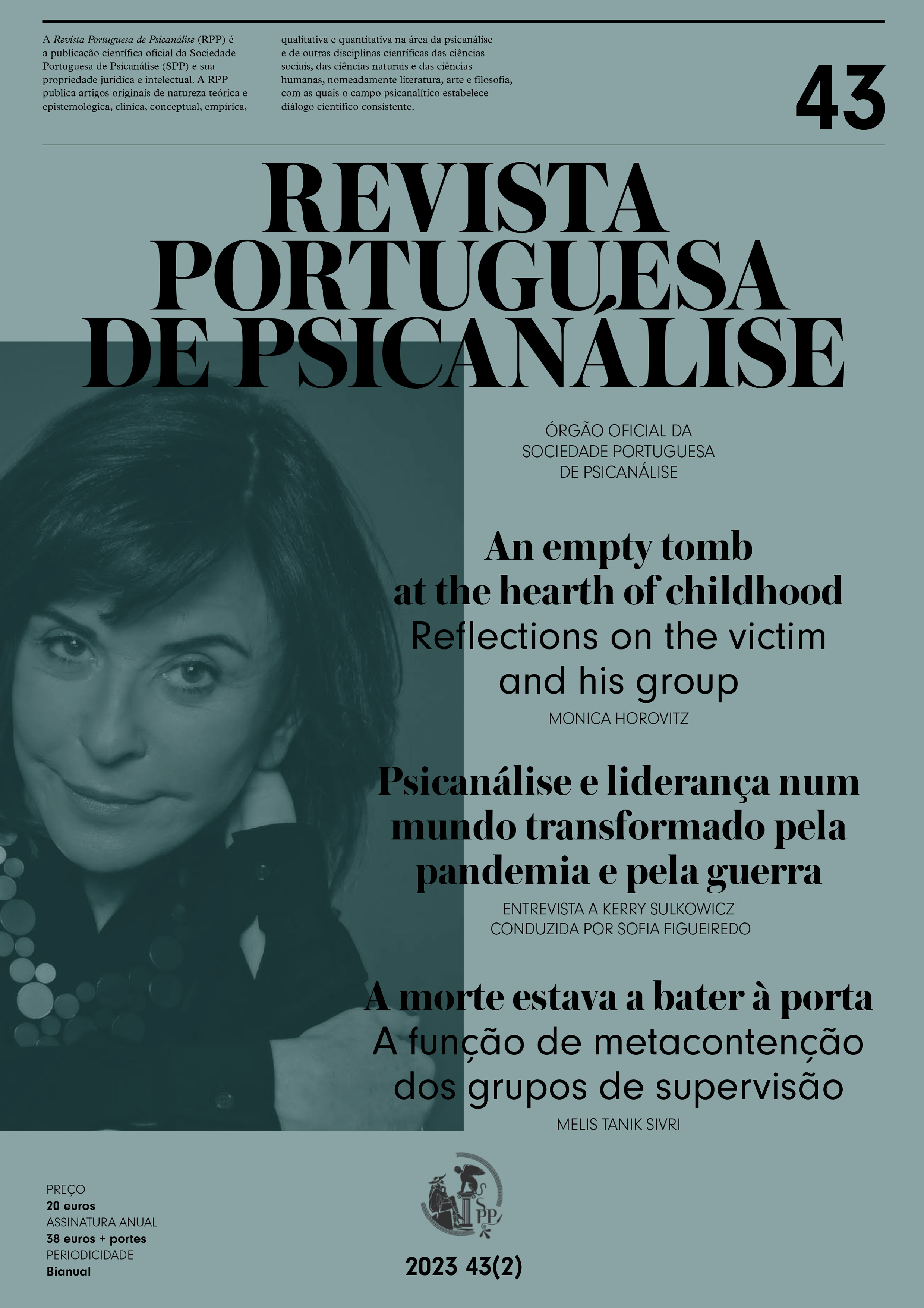Death was knocking on the door: The meta-containing function of supervision groups in working with victims of trauma

Resumen
La muerte estaba llamando a la puerta: La función metacotenedora del grupo de supervisión
La destrucción y la violencia que aumentan en el mundo plantean nuevas cuestiones sobre la teoría y la técnica en el campo del psicoanálisis. El objetivo de este trabajo es discutir la importancia de la función de metacotención de los grupos de supervisión con psicoterapeutas que trabajan con víctimas de trauma. Para ilustrar este proceso, se dan ejemplos de un grupo de supervisión voluntario que se estableció después de una serie de ataques terroristas en Turquía. Los eventos traumáticos que ocurren en el mundo exterior y que son presenciados en las sesiones pueden crear obstáculos para la capacidad de contención del terapeuta, lo que hace imposible pensar "bajo fuego" cuando la muerte llama a la puerta. Al elaborar los sentimientos contradictorios de la víctima de trauma y los mecanismos de identificación proyectiva del grupo, se logra un conocimiento más profundo del paciente y se revelan los puntos ciegos del terapeuta. Si la diada terapeuta-víctima de trauma logra pasar de la acción a la simbolización, el proceso terapéutico se enriquece, se activa el trabajo de duelo y, en algunos casos, los síntomas desaparecen y puede surgir una mejor adaptación al mundo exterior.
Palabras clave
continente-conteudo, fonción metacontentora, reverie, supervisión, trauma
Biografía del autor/a
Melis Tanik Sivri
Psicanalista didata da Psike Istanbul e Membro europeu da Cowap. É também Editora-Chefe dos livros anuais do The International Journal of Psychoanalysis.
Citas
- Bergstein, A. (2013). Transcending the caesura. The International Journal of Psychoanalysis, 94, 621–644.
- Bion,W. (1957). On arrogance. The International Journal of Psychoanalysis, 39, 144–146.
- Bion,W. (1959). Attacks on linking. The International Journal of Psychoanalysis, 40, 308–315.
- Bion, W. (1961a). Experiences in Groups and Other Papers. Tavistock.
- Bion, W. (1962a). The psychoanalytic study of thinking. The International Journal of Psychoanalysis, 43, 306–310.
- Bion,W. (1962b) Learning from Experience. Karnac Books.
- Bion, W. (1967). A theory of thinking. In Second Thoughts (pp.178–186). Heinemann. (Original publicado em 1961).
- Bion, W. (1997). War Memoires 1917-1919. Karnac Books.
- Brown, L. (2012). Bion’s discovery of alpha
- function:Thinking under fire on the battlefield and in the consulting room. The International Journal of Psychoanalysis, 93, 1191–1214.
- Freud, S. (1920). Beyond the pleasure principle. Em The Standard Edition of the Complete PsychologicalWorks of Sigmund Freud, vol. 18 (pp. 3–64). Hogarth Press.
- Guignard, F. (2002). A stroll through the preconscious. Consultado em 17 de julho de 2023, em http://www.ercankesal.com/sevdigim-yazilar/bilinconcesinde-bir-gezinti/
- Joannidis, C. (2000). Sharing the unconscious phantasy:The therapist’s emotional reaction to the group as-a-whole. Group Analysis, 33 (2), pp. 209–220.
- Klein, M. (1940). Mourning and its relation to manic-depressive states. The International Journal of Psychoanalysis, 21, 125–153.
- Leuzinger-Bohleber, M., Rickmeyer, C., Tahiri, M., Hettich, N. & Fischmann,T. (2016).What can psychoanalysis contribute to the current refugee crisis? Preliminary reports from STEP-BY-STEP: A psychoanalytic pilot project for supporting refugees in a “first reception camp” and crisis interventions with traumatized refugees. The International Journal of Psychoanalysis, 97, 1077–1093.
- Roper, M. (2012). Beyond containing: World War I and the psychoanalytic theories of Wilfred Bion. Em S. Alexander & B.Taylor (Eds.), History and psyche – Culture, psychoanalysis, and the past (pp.129–147). Palgrave Macmillan.
- Souter, K. M. (2009). The War Memoirs: Some origins of the thought of W. R. Bion. The International Journal of Psychoanalysis, 90, 795–808.
- Segal, H. (1952). A psycho-analytical approach to aesthetics. The International Journal of Psychoanalysis, 33, 196–207.
- Szykierski, D. (2010). The traumatic roots of containment:The evolution of Bion’s metapsychology. The Psychoanalytic Quarterly, 79, 935–968.
- Winnicott, D. W. (1951). Transitional objects and transitional phenomena. A study of the first not-me possession. The International Journal of Psychoanalysis, 34, 89–97.
- Triest, J. (2016). Individual and Collective Dimensions of Trauma: When the (Unconscious) Nightmare Becomes Reality. Conferência proferida em Istambul. Novembro de 2016.